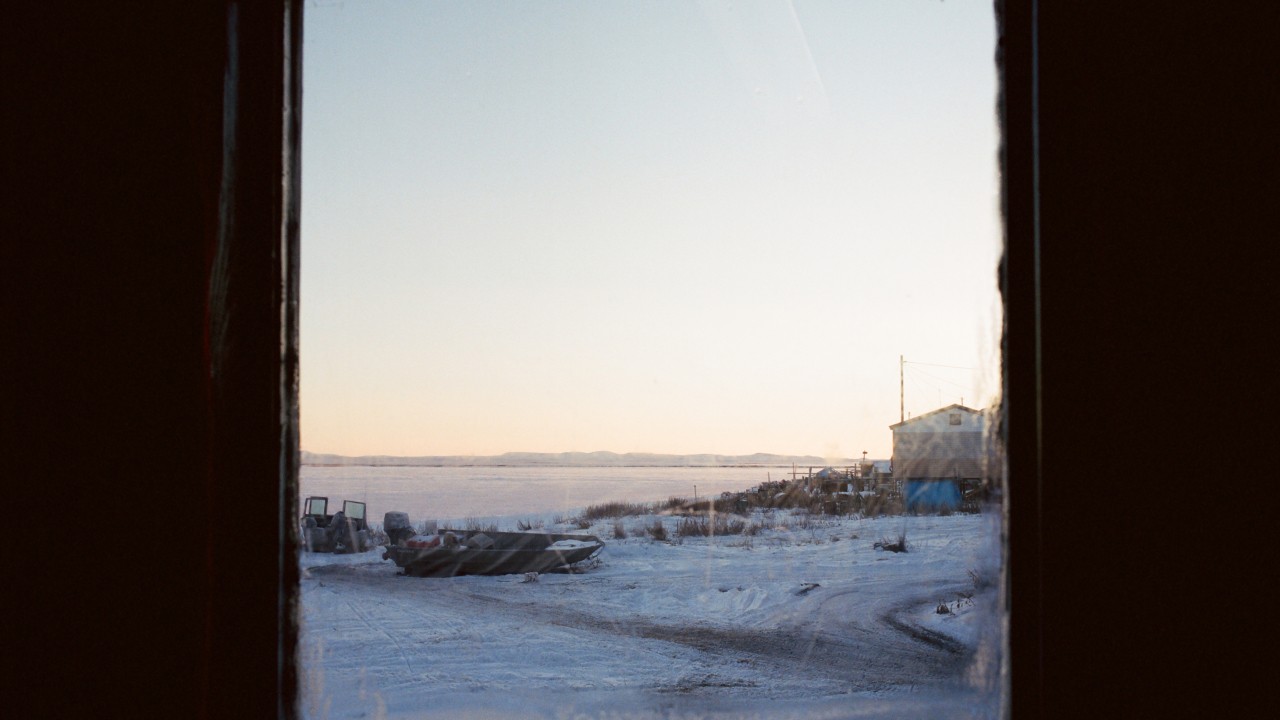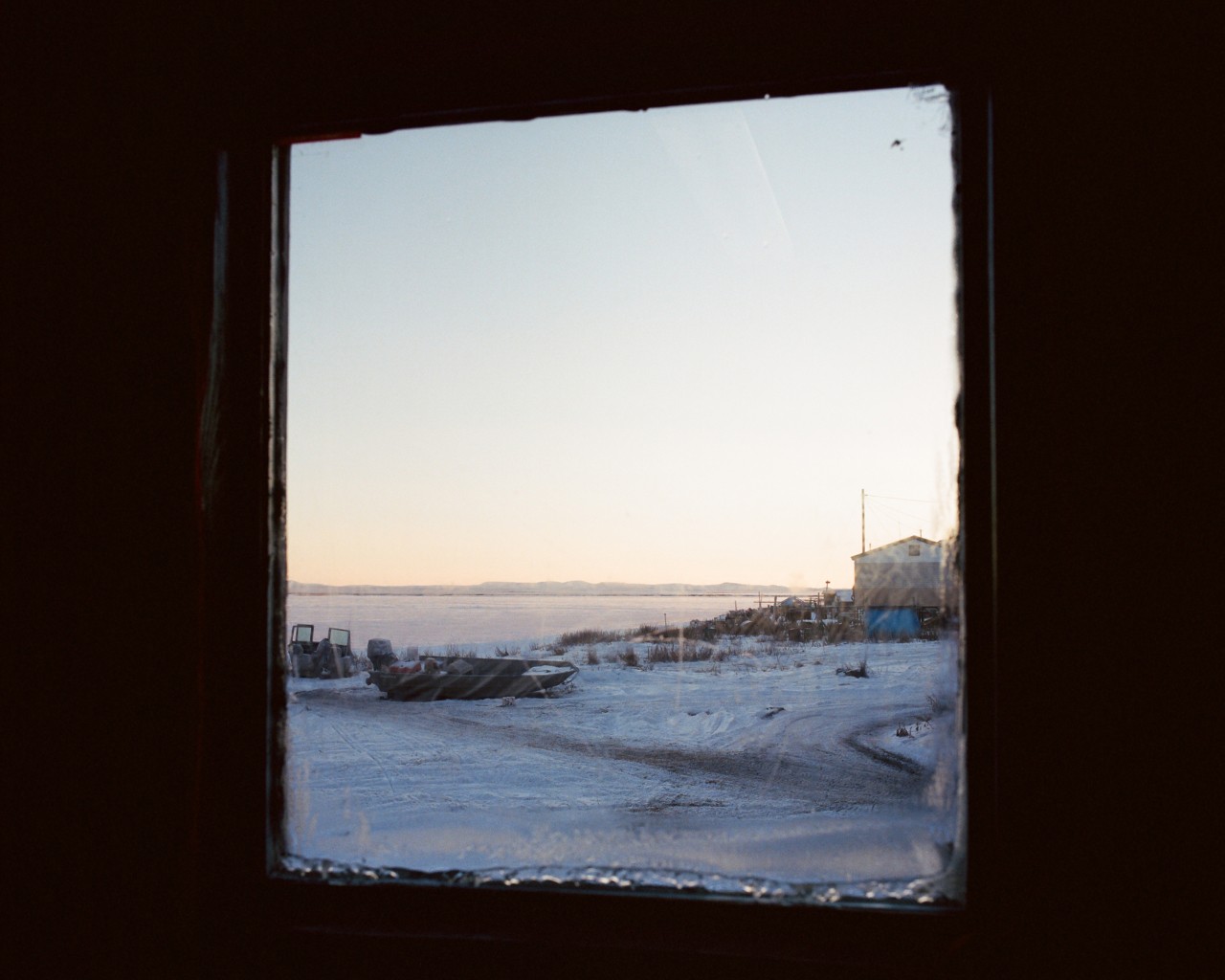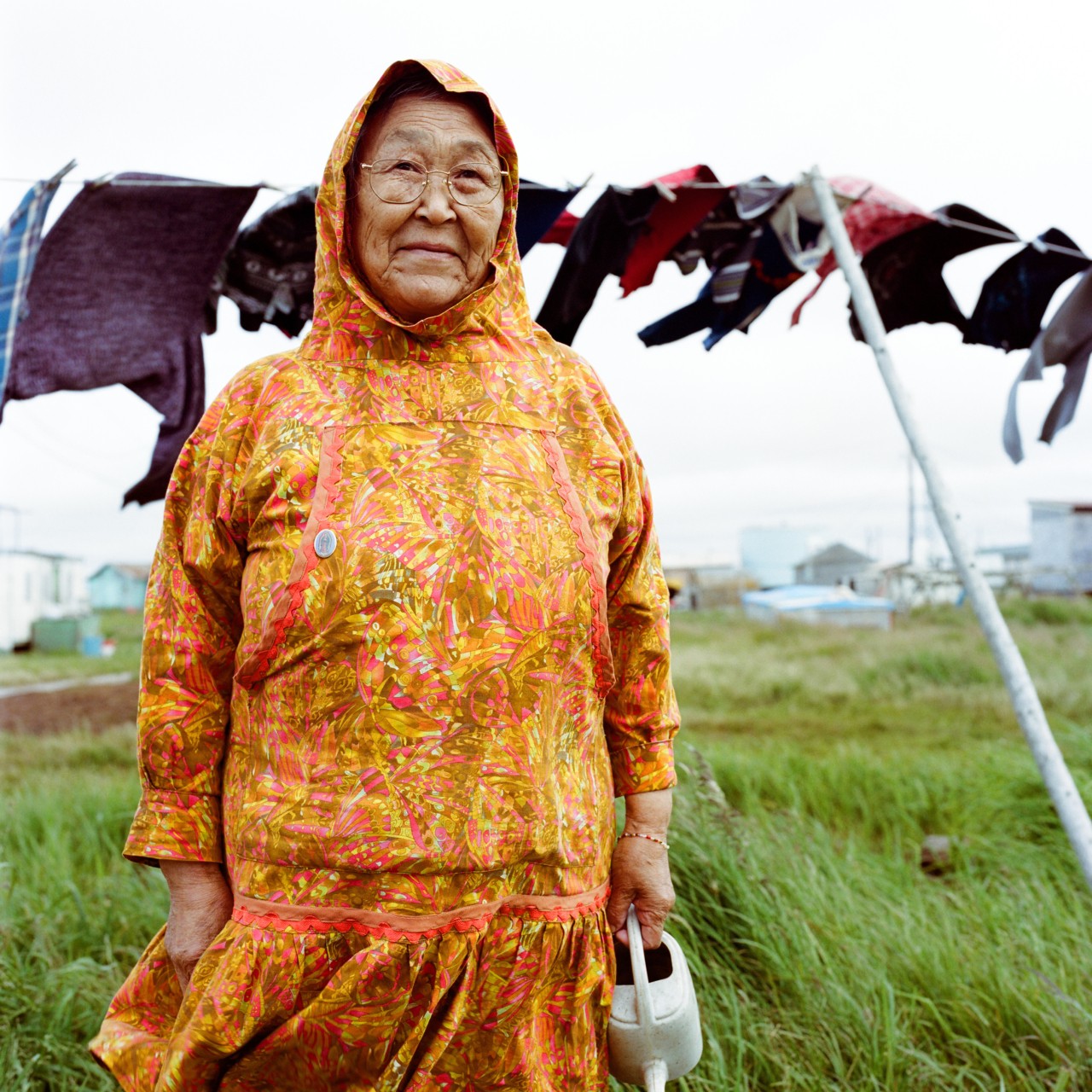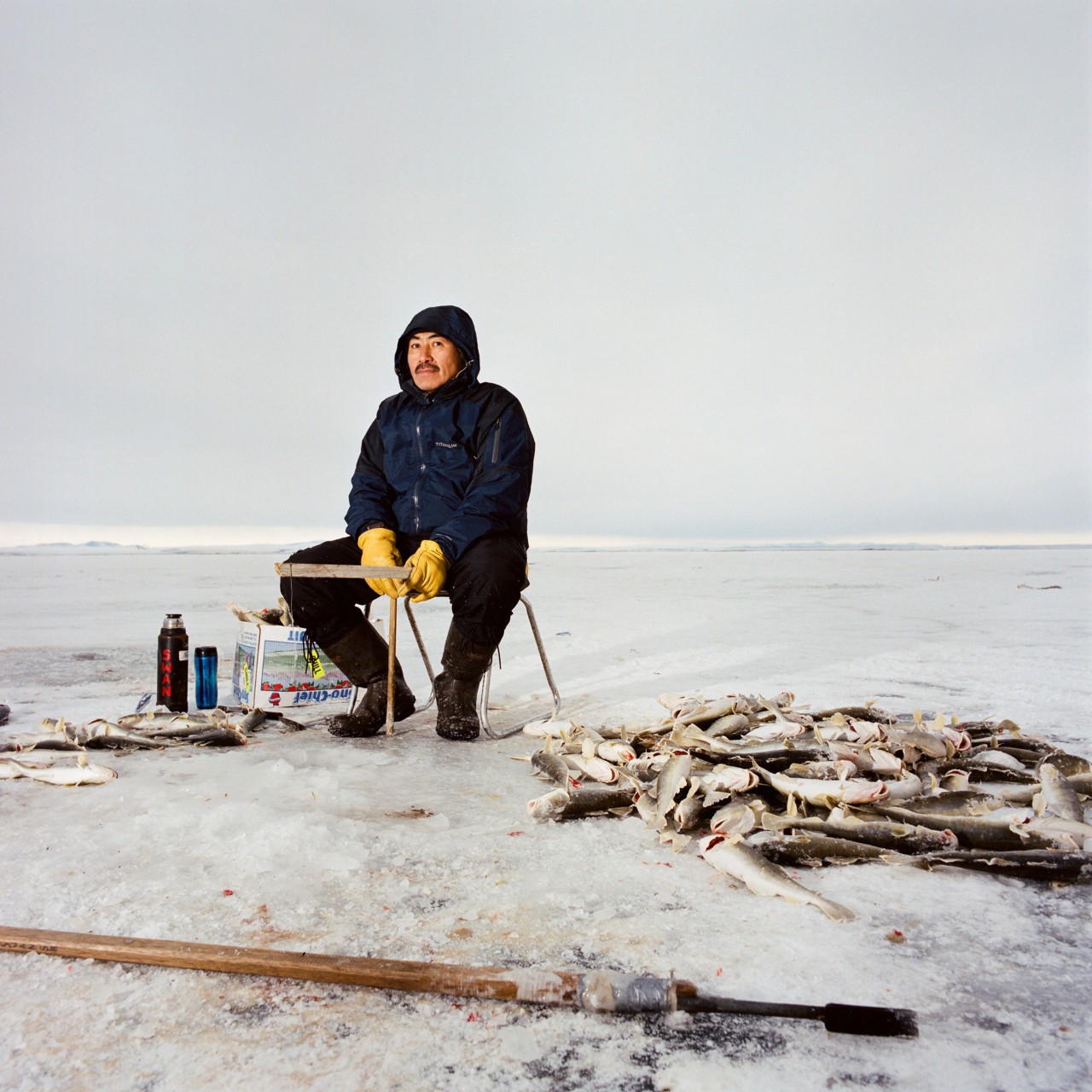

Words by Kate Nelson
Photographs by Brian Adams
Jade Begay (Diné/Tesuque Pueblo) has been on the front lines of key movements and moments as an Indigenous rights and climate policy expert, community organizer, and filmmaker.
Her roles include spending five years as director of policy and advocacy for the Indigenous-led NDN Collective; serving as impact producer for the emotion-evoking 2024 documentary Sugarcane illuminating the intergenerational trauma caused by Indian boarding schools; and more recently, working closely with Vice President Harris during the Harris-Walz election campaign as Native American Engagement Director. Among the honors bestowed upon Begay for her impressive efforts are a 2021 appointment by President Biden to the first-ever White House Environmental Justice Advisory Council.
Throughout her career, she has seen her fair share of wins and losses. But the 2024 re-election of Donald Trump is a defeat unlike any other. Here, Begay discusses what’s at stake for Native American communities under the new administration, how we can move toward greater self-determination, and what we can learn from centuries-long, Indigenous-led resistance movements against authoritarianism.

Kate Nelson
What does self-determination mean to you? And how can the idea of self-determination inspire broader movements against authoritarian governance?
Jade Begay
Over the years, I’ve observed how terms like “self-determination” have become very buzzwordy and are thrown around and maybe even conflated with terms like “liberation,” which is also a very popular notion in our movements. Self-determination, the way I’ve been taught to understand it, is a political term related to governance. Therefore in my work when I use this term, I’m referring to how tribes govern and aspire to govern.
As far as how self-determination relates to broader movements against authoritarian governance, there’s a lot to learn from Indigenous leaders and organizers. Because despite everything we’ve been through—including genocidal eras such as colonization and termination—we have self-determination in 2025. In fact, one could say that we have the most self-determination as tribal nations since colonization right now, and this is largely thanks to how we’ve organized and built power in the past 500 years.
Our movements can often be very poetic and visionary regarding what kind of world we deserve when it comes to liberation, justice, and equity, but at the same time, we shy away from what that means pragmatically; that in order to achieve those ideals, we need to wield power, which means we need to win politically.
So, in honor of the way Native peoples have advanced and protected self-determination, especially because 2025 marks the anniversary of the Indian Self-Determination and Education Assistance Act of 1975, I hope broader movements can ask themselves, “What does self-determination look like for our communities, our towns, our cities in the face of authoritarianism? Who is governing? What are the policies we need?” Also, broader movements can show up even stronger for Indigenous peoples because when our self-determination is honored, everyone benefits.
“We will likely see Trump roll back protections and open up lands and waters for mining and oil drilling, from the Grand Canyon to the Arctic and everywhere in between.”
Kate
How do you think the Trump presidency might impact tribal sovereignty, the Land Back Movement, and Indigenous environmental stewardship?
Jade
The impacts are going to be vast, and everything I’m about to name is why I took the stance very early on in 2024 that we need to vote and vote for the Democratic ticket.
Before I go on, I want to share that while the Democrats have failed progressive and younger voters on multiple fronts, it is an objective truth that the Biden Administration was the strongest [administration] on Native issues in history. We saw the largest investment into Indian Country ever. This matters because when we talk about what justice can look like, this is it. Bringing resources into our tribal communities means we can live and thrive in our homelands, build schools and health centers that are culturally specific, and have the infrastructure to be resilient in the face of climate change. To me, that’s at least part of what repairing past harm looks like.
Trump, on the other hand, has a record of undermining tribal sovereignty and self-determination. In the past, he never convened a White House Tribal Nations Summit, an opportunity to strengthen the partnership between the federal government and tribes. He limited the power of states and tribes to review projects on or near tribal lands—and we can expect that, with the SCOTUS overturning of Chevron Deference, there will be even less regulation for public and environmental health and safety. Whereas the Biden Administration, largely influenced by Interior Secretary Deb Haaland’s leadership, took action to protect lands, advance water rights claims, and expand monuments, we will likely see Trump roll back protections and open up lands and waters for mining and oil drilling, from the Grand Canyon to the Arctic and everywhere in between.
Other impacts the Trump agenda could have on Indian Country include stripping Indian Health Services, defunding the Department of Education, dismantling the Environmental Protection Agency, attacking DEI programs, reforming nutrition programs, and attacking LGBTQ+, two-spirit, and women’s rights.
But let’s be clear: These are just some of the impacts to Native communities located in the United States. The far right’s policies will impact Indigenous peoples across the globe, especially those in the Global South.

Kate
From your perspective, how does the Native fight for climate justice intersect with resistance to oppression?
Jade
I want to share an experience from a couple years back.
It was the morning of June 11, 2023, and I was en route to Chaco Canyon to celebrate a recent victory where the Department of Interior under Secretary Deb Haaland’s leadership had just withdrawn public lands surrounding Chaco Culture National Historical Park from future leasing and mining claims, thereby protecting this sacred site for decades to come. My colleague and I had just hit the part of the road where the pavement turns to dirt, and as we got closer to the site, we drove up to a barricade created by Navajo residents in the area. They were blocking the road in order to disrupt the celebration, because they believed that this decision was going to economically hurt them and that it was made without proper consultation. These protesters were also clearly Trump supporters, and waved around signs that discredited and insulted Secretary Haaland and Pueblo attendees. (For those not from the Southwest, Chaco Canyon has been a sacred site for Navajo and Pueblo communities alike for centuries.)
That was one of the saddest days of my organizing career because I saw in real-time the damage that misinformation—a tool of authoritarianism—from the far right was doing to my people.
It was evident that the far right had preyed on vulnerable, economically disadvantaged Native communities to spread misinformation and sow division. And we all know that when our nations are divided, tribal sovereignty is weakened. Under the incoming administration, we will be fighting an unprecedented level of misinformation, and as Native climate justice organizers, will need to dive deep to uphold truth and prevent that misinformation from dividing our communities. I also feel that it’s important to name that democracy—to practice and uphold consensus, community participation, fairness, and equity—is an Indigenous principle. So as we prepare for what’s coming, let’s remember that democracy is ancestral and that we need to uphold it, protect it, and not let it be co-opted.
“As we prepare for what’s coming, let’s remember that democracy is ancestral and that we need to uphold it, protect it, and not let it be co-opted.”
Kate
Reflecting on your time as the Harris-Walz campaign’s Native American Engagement Director, what takeaways do you have about mobilizing Native communities?
Jade
This was my first time working on a presidential campaign. First of all, I need to acknowledge the profound impact that this experience has had on my perspective as an organizer and advocate. I was able to build relationships with some of the best and brightest in not only Indian Country politics, but in U.S politics, and I got to connect with tribal leaders on the daily about their communities’ needs. The most humbling aspect of it all was people’s trust in me, which is an honor I’ll never forget.
That being said, it’s no secret that the role I served in was brought on far too late in the game, and many Native voters felt neglected. That Native people feel left behind by the [Democratic] party simply cannot happen again. This is going to require not only more investment from the party but stronger engagement and organizing from Native groups. We can’t wait for January 2028 to begin our election strategies. They must begin now, while the 2024 election is fresh in our minds and we remember all the coulda-shoulda-wouldas.
Kate
Looking ahead, what keeps you feeling hopeful and driven?
Jade
I will be completely honest with you that right now I feel 50% completely freaked out, angry, and disillusioned. The other 50% of me is excited, challenged, and ready to step up.
That said, I often rely on a saying from a Buddhist teacher that “chaos is good news.” So in that spirit, I do feel excited about, first, the opportunity we have to self-reflect and really sit with these questions: Do we want to win? And what does winning really mean? If we want self-determination and liberation, what does that mean for our organizing? Second, I think this also calls into question how we bring more people in. This election cycle showed us that progressives aren’t winning in that regard, and actually, we’re losing people. We need to turn the mirror on ourselves, ask one another hard questions, and rethink our message, our approach, and even the very structures of our movements.
Finally, I’m also really excited for the work happening at the state level, and I’m fully ready to begin thinking about the 2026 midterms, in particular the upcoming governor’s race in my own state of New Mexico. I’ll just say for now: Let’s watch out for Auntie Deb.
Political Lessons From 500 Years of Indigenous Resistance

